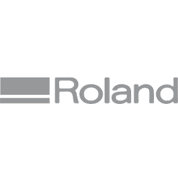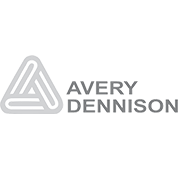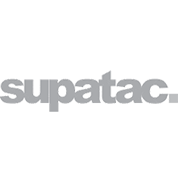Safety Signage Compliance: What Every Wagga Wagga Business Should Know
Signpro Graffix • April 23, 2025
Workplace safety signage plays a crucial role in keeping people informed, alert and protected. In businesses of all types—from warehouses and workshops to retail stores and office buildings—signs are a visible reminder of what needs to be done to minimise risks. However, beyond their practical use, safety signs are also a legal requirement. For businesses operating in Wagga Wagga, staying compliant with Australian Work Health and Safety (WHS) standards is not optional.
This guide explains what compliance involves, why it matters, and how custom signage can help meet your responsibilities. Whether you're managing a small team or a large site, understanding the requirements for safety signage will help create a safer, more efficient workplace. Let’s explore the key points every business owner or manager should know.
Why Safety Signage Is More Than Just a Legal Requirement
Safety signs are critical for communicating risk and guiding behaviour in workplaces where hazards are present. They don’t just help meet compliance—they reduce the likelihood of accidents and help foster a culture of care and accountability.
Effective safety signage contributes to:
- Preventing workplace injuries by alerting staff to hazards
- Directing staff & visitors to emergency exits or safety equipment
- Informing employees about mandatory PPE or hygiene requirements
- Supporting incident response through clear, visible instructions
By using signs appropriately, businesses send a clear message: safety is a priority.
Understanding WHS Regulations for Safety Signs in Australia
The use of safety signage in the workplace is governed by Australian Standard AS 1319:1994, which outlines the design, colours, and purposes of signs used to communicate health and safety information. Under WHS laws, all businesses have a legal duty to comply with these standards.
Key compliance elements include:
- Standardised colours and shapes for each sign type (e.g., red for prohibition, yellow for warning).
- Correct placement—signs must be clearly visible and positioned where the hazard exists.
- Permanence and durability to ensure visibility and legibility over time.
- Language and symbols that are universally understood.
Business owners are responsible for ensuring all safety signage is accurate, legible, and appropriate to their specific operational risks.
The Consequences of Non-Compliance with Safety Signage Laws
Failing to meet signage obligations can expose your business to serious repercussions. Beyond the obvious safety risks, there are legal and financial consequences that can impact operations and reputation.
Potential consequences include:
- Legal action & fines under WHS legislation
- Workplace injuries or incidents leading to insurance claims
- Increased scrutiny or penalties from safety regulators
- Negative media coverage or reputational damage
How Custom Safety Signs Help Meet Unique Workplace Needs
No two workplaces are identical, which is why custom safety signs are often necessary to ensure specific hazards are properly addressed. Off-the-shelf signage may fail to clearly communicate unique site risks.
Tailored signage helps by:
- Reflecting specific site layouts or unique environmental risks
- Using branding elements for professional appearance and familiarity
- Integrating multilingual text where relevant for a diverse workforce
- Addressing temporary or seasonal hazards like flood-prone zones
From confined space warnings to biohazard notices, a custom approach ensures signage aligns with your operational context and staff needs.
Common Mistakes Wagga Wagga Businesses Make with Safety Signage
Even well-meaning businesses sometimes fail to comply. Whether through oversight or a lack of updates, signage issues can creep in and compromise safety.
Some of the most common mistakes include:
- Using faded or outdated signage that is no longer legible
- Incorrect placement—signs obscured by equipment or not near the hazard
- Choosing non-compliant colours or formats
- Relying on generic signs that don’t reflect actual site risks
- Forgetting to replace temporary or damaged signs
Routine inspections can help identify and rectify these issues before they become liabilities.
How Often Should You Review & Update Your Safety Signage?
Just like equipment and policies, safety signage needs regular review to remain effective and compliant. Conditions change, and signage must evolve to reflect these changes.
Recommended times to review signage include:
- Annually, as part of your WHS audit or inspection cycle
- After renovations or layout changes that affect access or pose hazards
- When new equipment or processes are introduced
- Following incidents or near-misses to address emerging risks
- If any signs are vandalised, faded or damaged
Documentation of reviews and updates can also help demonstrate due diligence during audits or investigations.
Choosing the Right Materials & Designs for Your Environment
Environmental conditions, lighting, and foot traffic levels all influence the kind of signage suitable for your space. Cheap or mismatched signage may not withstand your site's demands.
Consider the following design factors:
- Material durability - Use UV-resistant and weatherproof materials for outdoor signs
- Size & visibility - Larger fonts for long-view visibility in open spaces
- Reflective options for low-light or emergency scenarios
- Mounting methods appropriate for the surface and exposure level
- Easy-to-understand icons for quick recognition and multilingual comprehension
Investing in the right sign for the right space ensures longevity, clarity, and compliance.
Partnering with a Local Expert for Compliance Peace of Mind
Navigating compliance, design, and durability can feel overwhelming, especially for time-poor business owners. That’s why partnering with a local signage expert who understands the regulations and regional business needs can save time, stress, and money.
Benefits of working with a local signage provider include:
- On-site assessments to identify gaps & recommend solutions
- Access to compliant design templates that meet Australian standards
- Fast turnaround & reliable installation services
- Customised solutions based on your site-specific requirements
- Ongoing support for updates, replacements, or audits
With a trusted provider on your side, you can focus on running your business knowing your compliance is covered.
Need Safety Signage Advice? Contact Us
At Signpro Graffix, we understand how crucial compliant, high-quality safety signage is for protecting your team and meeting your WHS obligations. We provide custom safety signs in Wagga Wagga tailored to your business’s specific environment, risks, and layout, ensuring both visibility and durability.
Whether you need hazard signs, PPE reminders, evacuation maps, or site-specific warnings, we’ve got the experience and tools to keep your business compliant and your people safe. Give us a call or get in touch via our contact page to arrange a site visit or discuss your signage needs. Let us help you create a safer workplace—one sign at a time.














